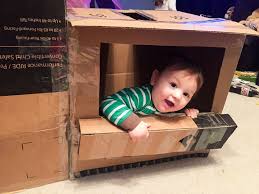There used to be a bumper sticker that said, “Have you hugged your kid today?
Maybe today we need one that says, “Have you played with your kid today?” I’m using the idea of play in a very general way. This play is not just a game with rules or a sport. But something both parent and child can especially enjoy together.
Have the only things you’ve said and done with your children all been about tasks and completion? Here are a few things to think about.
- Have you taken the time to tell or hear a silly story?
- Have you plopped down on the floor and wrestled with your children?
- Have you hugged your little child and started to dance across the floor?
- Have you made a game of a chore instead of just telling Little One to ‘get it done’?
- Have you worked a puzzle or drawn a picture together?
 I think you get the idea. All these things take a little time. We must relax a little and not be compulsive about the completion of a task. They all mean some smiles or laughs by both parent and child. In other words, “Have Fun!”
I think you get the idea. All these things take a little time. We must relax a little and not be compulsive about the completion of a task. They all mean some smiles or laughs by both parent and child. In other words, “Have Fun!”
Don’t let a day go by where the only things you talk to your child about are tasks and time and duty. Take a deep breath. Lay down your phone or paper and focus on your child. Start singing a silly song. You might find there is a better atmosphere in your home for the whole evening.
 This is no news. We all see the difference, but we may not realize the importance of the difference.
This is no news. We all see the difference, but we may not realize the importance of the difference.
 In an earlier article, we talked about
In an earlier article, we talked about  Baby signals he has had enough by looking away from whatever is in front of him. If you miss that, he may try to cover his face with his hands or try to push away. He will bunch up his forehead, arch his back and tense his whole body. A cry with a long wind-up before the wail is his strongest message that he is over stimulated.
Baby signals he has had enough by looking away from whatever is in front of him. If you miss that, he may try to cover his face with his hands or try to push away. He will bunch up his forehead, arch his back and tense his whole body. A cry with a long wind-up before the wail is his strongest message that he is over stimulated.
 Baby and children’s toys can really get expensive. Kids’ attention spans are short. So, trying to keep them in new and interesting toys can get to be a very expensive proposition.
Baby and children’s toys can really get expensive. Kids’ attention spans are short. So, trying to keep them in new and interesting toys can get to be a very expensive proposition. Kids love to make a fort out of old packing boxes. The boxes appliances come in are their favorites.
Kids love to make a fort out of old packing boxes. The boxes appliances come in are their favorites.